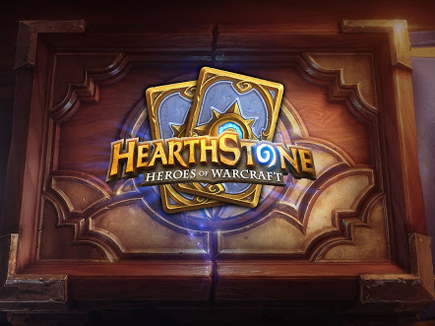Tom's Guide Verdict
"Hearthstone" is a free and addictive card battle game that works even better on iPad than it does on PC.
Pros
- +
Free
- +
Simple and addictive
- +
Vibrant, charming visuals
- +
Cross-platform play with PC/Mac versions
Cons
- -
No offline play
- -
Getting better cards requires lots of patience or real money
Why you can trust Tom's Guide
Blizzard's digital collectible card game "Hearthstone: Heroes of Warcraft" became PC gaming's new obsession when it launched, boasting accessible gameplay and a charming presentation inspired by "World of Warcraft."
The addiction has gone mobile with "Hearthstone" for iPad, a port that preserves every card, character and spell from the PC game, while managing to be even more enjoyable thanks to intuitive touch controls. This freebie is an essential for iPad owners, whether they're card-game newbies or diehard Blizzard vets.
Setup
Once you've nabbed "Hearthstone" for free from the App Store, you'll need to set up a Battle.net account or log in with an existing one. Battle.net accounts work across all Blizzard games, including "Diablo III" and "World of Warcraft," and you can create an account in-game or on the official Battle.net website. If you already have an account, all of your "Hearthstone" cards and characters will carry over.
Before the battle
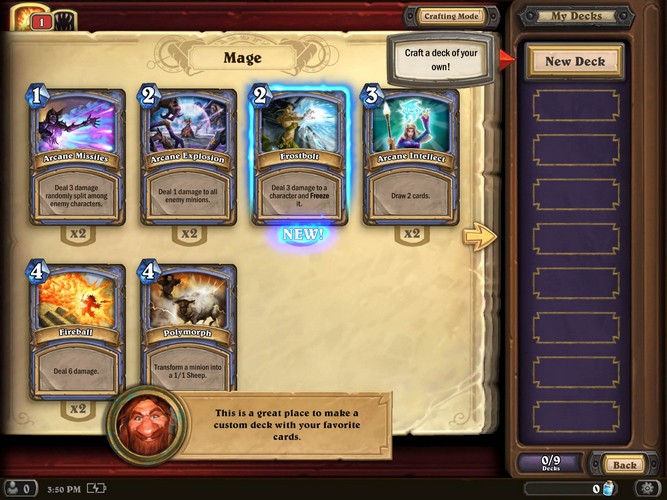
Even if you've never touched a collectible card game, "Hearthstone" is as inviting as competitive titles come. The game's one-on-one duels consist of strategically drawing and playing a variety of attack and ability cards, until your or your opponent's health is drained from 30 hit points to zero. The action is fast and fluid, and you can usually finish a match in 15 or 20 minutes.
MORE: 20 Best iOS Games to Play Now
Before each match, you choose a hero and a deck. You'll then be shown your starting hand of three cards (four if you're going second), which can be swapped out on an individual basis before the action begins.
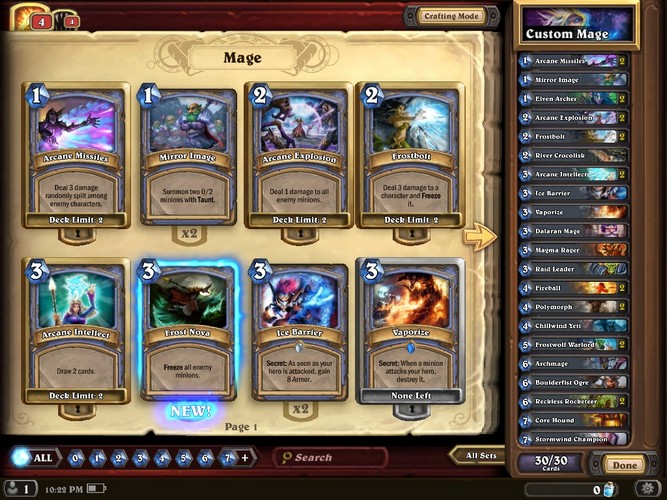
Playing a card costs a certain number of "mana" points, units of magic power common in role-playing games. You'll get one mana point at the start of the game, and an additional one for each turn. This slow accumulation of currency keeps battles from spiraling out of control, as you'll need to wait a few turns before you can play powerful cards such as the Temple Enforcer (6 mana) and the War Golem (7 mana). You'll also use mana to activate your hero's special abilities, such as the Mage's damaging Fireblast and the Druid's Shapeshift, which gives the character more armor and attack power.
Get instant access to breaking news, the hottest reviews, great deals and helpful tips.
Minion cards lie at the heart of "Hearthstone," as they represent characters that fight for your hero. Each minion card has a health value on the bottom right representing how many hits it can take, as well as an attack value on the bottom left that shows how much damage the card does.
Some minions enter the battlefield with special abilities. Those with "Taunt" must be destroyed before their hero can take damage, while those with the "Charge" ability can attack on the same turn that they're drawn.
There are also tons of non-minion cards that play a crucial role in the battlefield, including the stat-boosting "Mark of the Wild" and the "Healing Touch" card, which restores health. Our favorite of these is the "Polymorph" card, which transforms even the most menacing of minions into a literal sheep with low attack and health values.
Gameplay
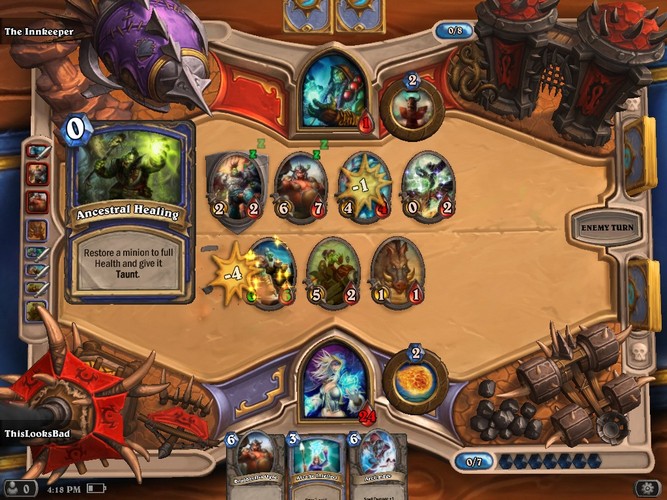
"Hearthstone" feels immediately intuitive, and it only took a few turns for us to get into the rhythm of battle. With your hand laid out at the bottom of the screen, playing a card is as simple as dragging it onto the game board with your finger. If you've got a minion in play or an attack card ready, you slide that card towards the enemy minion or hero you'd like to damage.
MORE: 10 Best Indie Games for iOS
Succeeding in "Hearthstone" requires tough decisions, and a little bit of luck. Do you go right for your enemy's hero, or strip away his or her options by killing his minions? Should you rely on hero powers, or build up an army of minions for protection and firepower? These are the conflicts that weighed on us as we pored over the vibrant virtual game board.
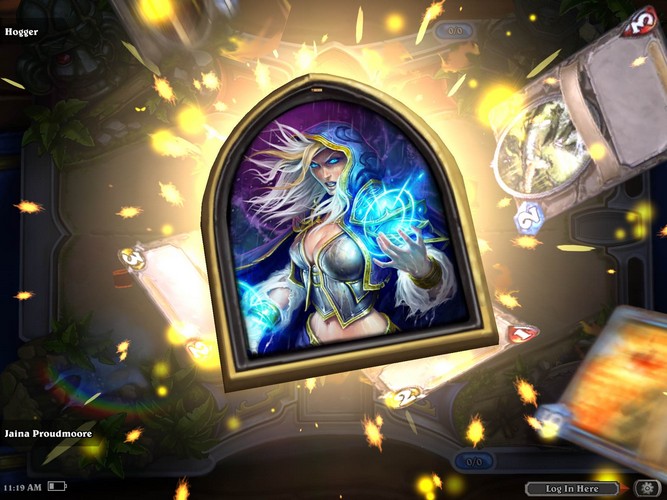
Since your cards are drawn at random, there is a little bit of luck behind who wins and who loses in "Hearthstone." However, you'll still need smarts to dominate the game, and few things are more satisfying than properly rationing your mana in order to unleash a devastating flurry of attacks on your opponent.
Modes and progression
After completing the game's six tutorial battles, you'll have a few ways to play "Hearthstone."
Play mode consists of both Casual and Ranked online battles. The former play type is ideal for practicing and playing for fun, while the latter has you work your way up various ranks, ranging from "Angry Chicken" to "Legend." Each calendar month is considered a "season" of ranked "Hearthstone" play, and you'll unlock new card backs and alternate versions of your hero depending on your rank at the end of each season.
If you're not quite ready for live opponents, Practice mode lets you fight against computer-controlled versions of any of the game's nine hero types. "Hearthstone" starts you off with just the Mage, but you can unlock the Hunter, Warrior, Shaman, Druid, Priest, Rogue, Paladin and Warlock by defeating them in this mode.
If any of your Battle.net friends are also playing "Hearthstone," you can challenge them to a friendly battle.
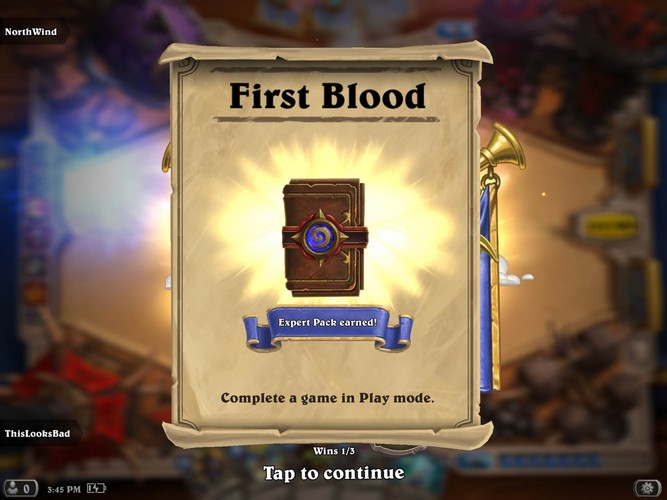
Once you've unlocked all heroes and are feeling brave, you can enter the Arena. In this pay-to-play mode, you pony up 150 gold units (which can be earned from completing special in-game tasks) and try your luck with a randomly selected group of heroes and cards. Instead of choosing a pre-built deck as you would in other modes, you'll build one on the spot. There are no card limits in the Arena, leaving you free to stack your deck with multiple copies of your most devastating minions and spells.
You'll battle in the Arena until you've either lost three times or won 12 times. If you do the latter, you'll win a bevy of rewards, including card packs, special cards and gold.
We stuck mostly with Casual matches in our sessions and were usually matched up with an opponent within seconds. The game ran equally smoothly when playing against iPad and PC players.
No matter how you play "Hearthstone," or whether you win or lose, you'll gain experience points for your chosen hero. This makes every match feel rewarding, as reaching new experience levels is one of many ways you can unlock new cards.
Deck building and crafting
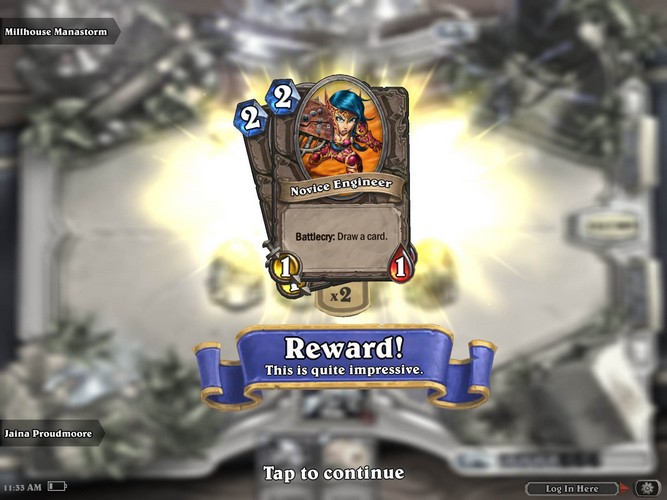
Making smart decisions in the heat of battle is key, but many "Hearthstone" matches are won or lost in the deck-building process. Your deck consists of 30 cards, and you can only have two copies of a single card type and one copy of an extra-powerful "legendary" card.
Even though your cards are drawn randomly throughout a match, customizing that pool of cards is essential to having the upper hand. You'll want a good mix of low-mana cards to use early in the match, as well as high-mana ones for dealing big damage or healing up as the rounds go on.
The core of your play style is developed in the deck-building process, as you can opt to fill your deck with overwhelming offense cards, smart defensive cards or a strategic mix of both.
Crafting Mode is essentially the game's form of selling and buying cards. You can "disenchant" any unwanted cards in exchange for Arcane Dust, which you can use to acquire new cards. This mode is useful if you've got a large pile of common cards, as you can sell them for Dust to use towards more rare and powerful minions and abilities.
Graphics and sound
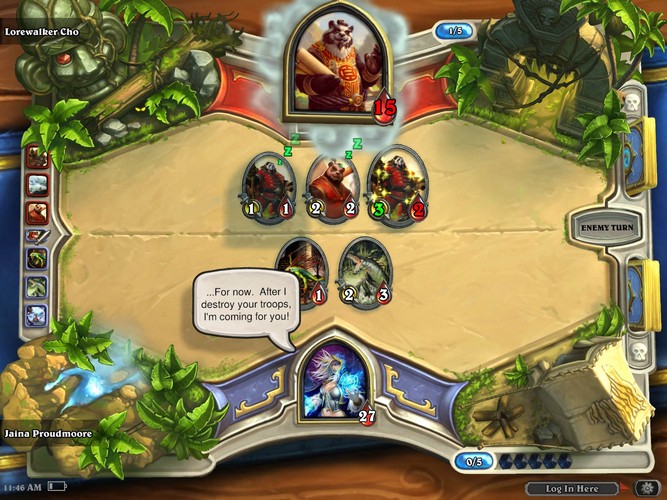
"Hearthstone" is filled with living and breathing game boards that are as fun to look at as they are to play on. Each arena sports "World of Warcraft"-inspired interactive objects on every corner, so you can squash plants, turn lights on and off, and smash a gong cymbal while you're waiting for your opponent to make a move.
Despite being a card game, "Hearthstone" is fluidly animated. Minion cards physically knock into one another and shatter when being played, and you'll see special abilities, such as the Mage's flaming Fireblast projectile, play out in real time. When a match ends, the losing player's hero card crumbles in dramatic fashion.
The audio in "Hearthstone" is just as satisfying. The game's soothing folky score is filled with acoustic guitars and woodwinds, making it easy to get into the zone as you plan your next move. Every hero and minion character is fully voiced, from the brutish battle cry of the monstrous Raid Leader to the high-pitched quips of the Dalaran Mage.
PC vs. iPad
One of the most striking things about "Hearthstone" on iPad is that not a single sacrifice was made in porting it over from the PC and Mac versions. Everything from the card collection to the user interface is lifted straight from the source, and we'd argue that playing on a tablet is the ideal way to experience "Hearthstone."
We felt a more direct sense of action when dragging our cards across the board rather than just clicking on them, and enjoyed playing the digital card game in a tabletop setting by placing our iPad on a flat surface.
"Hearthstone" for iPad is made even better by the fact that your cloud-based game data stays with you on any device. After playing for hours on end using our iPad, we logged into the PC version and had access to the same cards and characters, with all of our stats intact.
In-app purchases/unlockables
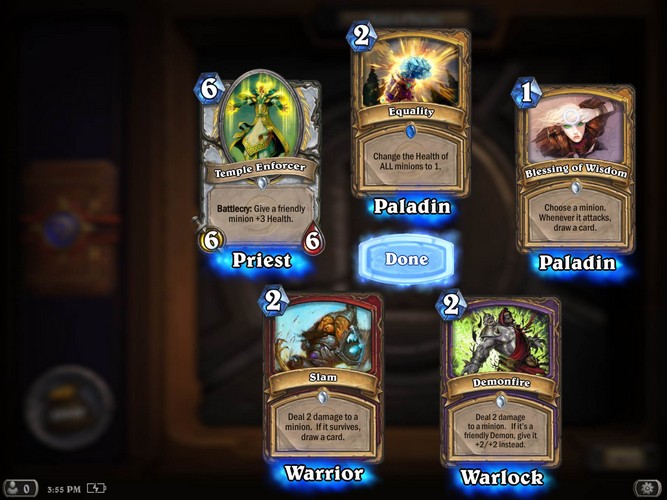
As with any free-to-play game, there are plenty of ways to spend money in "Hearthstone." A single card pack will run you 100 gold coins’ worth of in-game currency, and buying anything more than that will cost you real cash.
You can obtain two card packs for $2.99, seven packs for $9.99, 15 packs for $19.99 and 40 packs for $49.99. Each pack contains five expert Hearthstone cards, with at least one rare card per pack.
You don't have to spend a dime to have fun in Hearthstone, though; buying packs simply gets you good cards more quickly. If you're willing to spend a good amount of time completing in-game challenges called Quests, you can build up a decent reserve of gold for free.
Single-player content
While Hearthstone is filled with heroes from Blizzard's beloved "Warcraft" series, the core game is all about one-on-one combat and has no story to speak of. There will be single-player campaigns released in the future, including the upcoming "Curse of Naxxramas" expansion that will add 30 new cards, and a handful of boss fights that will roll out over the course of five weeks.
One of our few major gripes with "Hearthstone" is that the game can't be played without an Internet connection. While the meat of the game consists of challenging human opponents online, we would have enjoyed being able to practice against A.I. while stuck on an underground train or anywhere else without Wi-Fi.
Verdict
Accessible, addictive and teeming with personality, "Hearthstone" is a must-have freebie for your iPad. This digital card-battle game has plenty of fan service for "World of Warcraft" diehards, but you need not be familiar with that game, or even collectible card games in general, to have a good time.
"Hearthstone" is also a shining example of iPad gaming done right. It replicates its PC counterpart without making any sacrifices, and manages to feel like it was designed for tablets in the first place.
Whether you want a deep strategy game to sink your teeth into, or something to occasionally pass the time with on the couch, "Hearthstone" gets our whole-hearted recommendation.
Mike Andronico is Senior Writer at CNNUnderscored. He was formerly Managing Editor at Tom's Guide, where he wrote extensively on gaming, as well as running the show on the news front. When not at work, you can usually catch him playing Street Fighter, devouring Twitch streams and trying to convince people that Hawkeye is the best Avenger.
